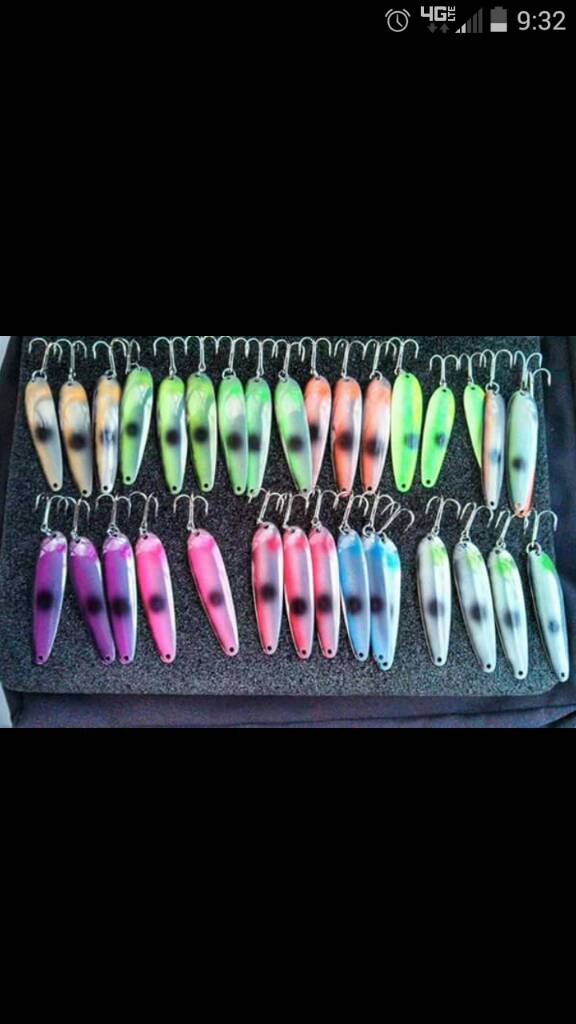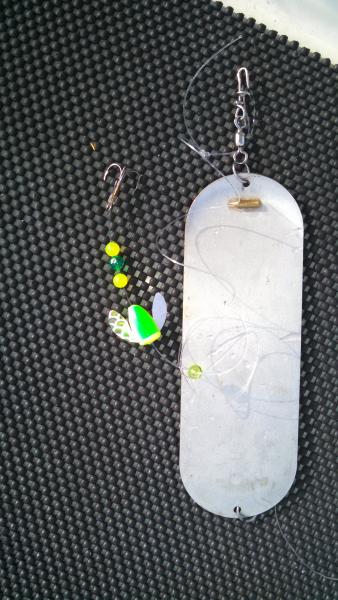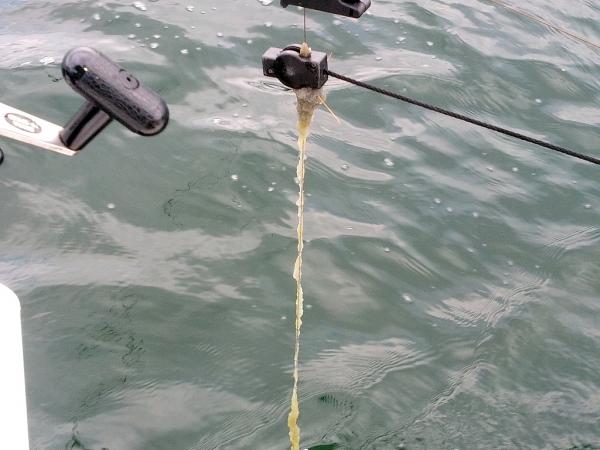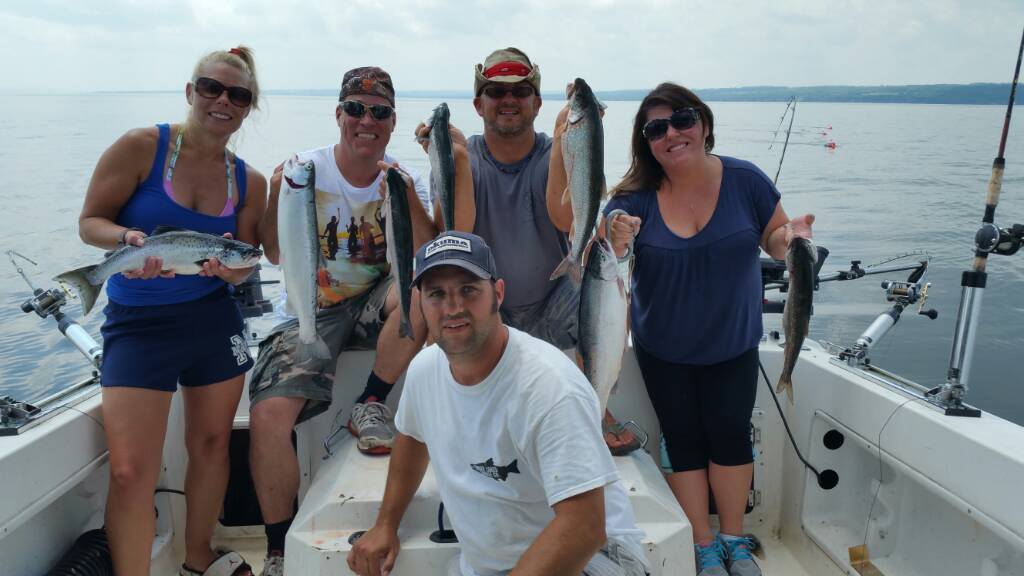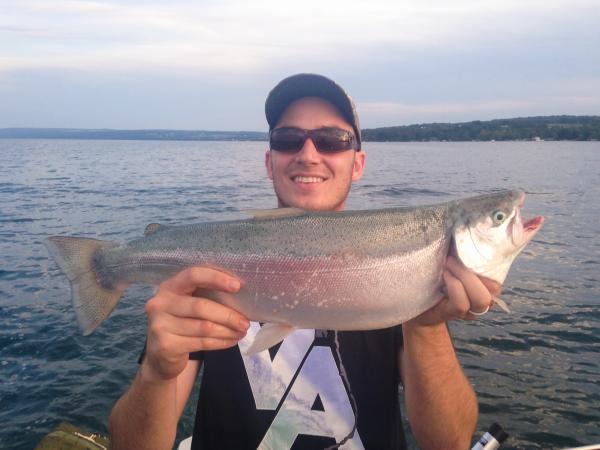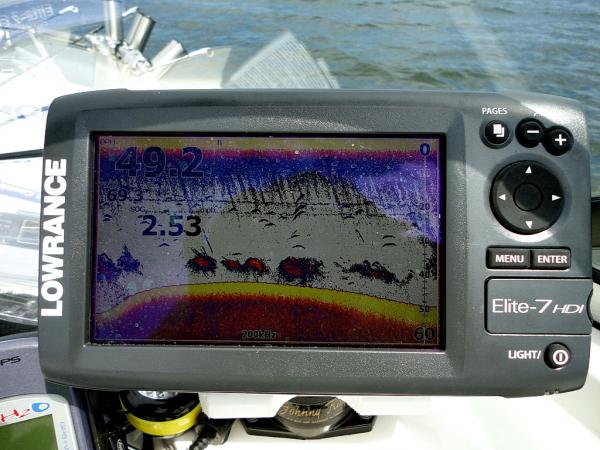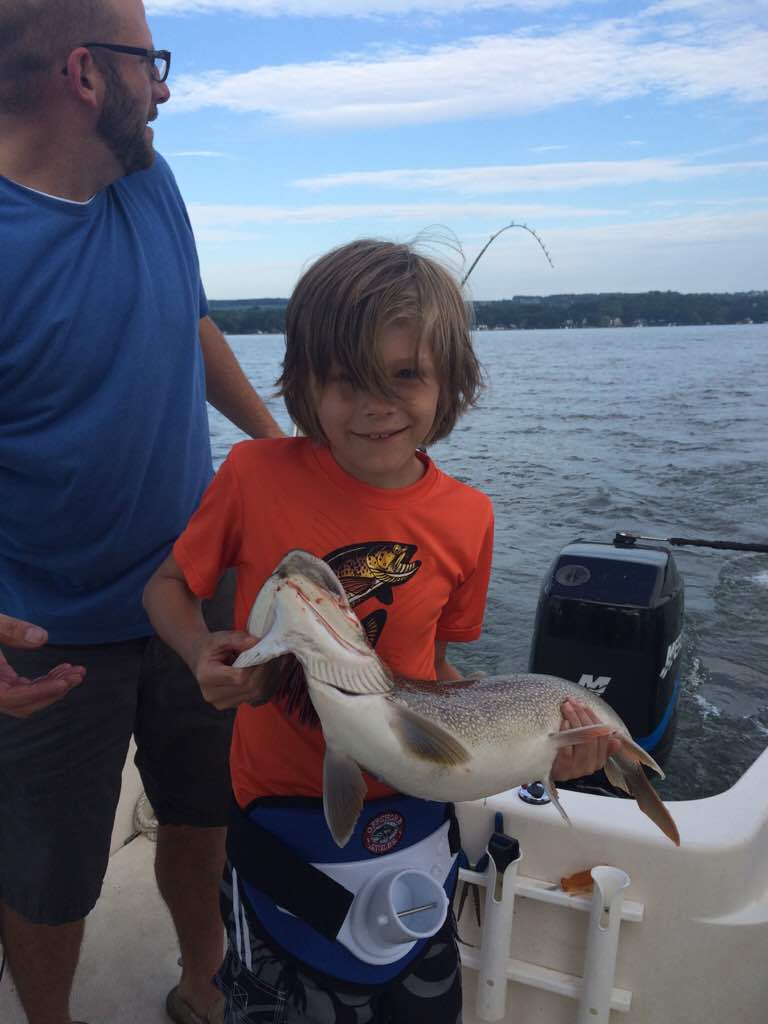-
Posts
13,865 -
Joined
-
Last visited
Everything posted by Sk8man
-
These guys all have it right. I've fished solo more than with other folks for many years and safety first is always the best policy and it took awhile till I had that attitude. Mark is right on the money with his specific suggestions and it is obviously based on experience. Keep the net located at the back of the boat for easy access and keep your leaders short enough according to rod length so that you can net without having to hand line them unless you are very experienced doing it. You'll have to keep a closer eye on your depth finder and steering than otherwise too. I always run sliders on my riggers to maximize my lure presentations and I also keep a knife and needle nose pliers right on back easily accessible for dealing with severe tangles in rough water or windy conditions and they are come in handy for releasing lampreys in multiple pieces
-
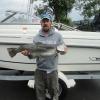
Stereo, battery life, and solar panel questions...
Sk8man replied to weijing3333's topic in This Old Boat
I agree Rich even 5 amps would be a pretty large draw for a standard boat stereo setup I would think. -
X2 on east winds suck.....I've never done well with an east wind no matter where I have fished (for whatever reason)
-

Stereo, battery life, and solar panel questions...
Sk8man replied to weijing3333's topic in This Old Boat
In all likelihood an older radio may draw MORE current than a new one because of the older technology and a variety of other size and connection factors. I know I accidentally turned mine on at low volume when I first got the boat and over night the battery was dead. I think they do draw quite a bit of juice. -
-
X2 on Marks suggestion of the Diawa
-
-
-
-
-

Puck on fish finder?
Sk8man replied to hookedupf7's topic in Questions About Trout & Salmon Trolling?
A "puck" refers to the shape of some transducers...they can be black and vaguely resemble a hockey puck and they are mounted on the transom of the boat. -
Just make suure it is the newest 4D if you want the Bluetooth functions....it has a red screen not the blue one.
-

Asking for help..........Please
Sk8man replied to GlassWater Outdoors's topic in Questions About Trout & Salmon Trolling?
Not sure whether you have the older round wheel type Fish Hawk with the probe and 100 or more ft of probe wire or the newer TD model but despite the fact that temps change with currents, location and the rise and fall of the thermocline it is very useful to at least take temp readings when you start out now that the thermocline is forming or has formed. With the old model you may need additional weight (sinkers) to get your probe wire as straight down as possible (but not too much to overly strain the wire) and let your boat come to as near a stop as possible before deploying. The TD can be attached (carefully because the original attachment release is flimsy plastic) to your downrigger wire and with the boat stopped run it down a hundred ft or so and take readings every five ft as it goes. Bring it up relatively quickly and record the temps at each 5 ft interval on a recording sheet and look for the steepest change in temps (largest change in degrees) that will be the location of the thermocline. . Look for bait and or fish activity there too but the kings are known to go out of the so-called "preferred" temp to find food so they may often will be in water in the lower forties so if you are spotting fish around the thermocline always run at least one or two lines with say a flasher/fly or Spinney below it in the 42-48 degree temps. The wire will help greatly getting down in that range with large dipseys. I'm a 7 strand guy so no real experience with the 19 but the guys that use it on here seem to like it real well and they feel that it exerts less friction on the tip of the rod -
I've always used crimps with wire instead of knots (despite all the contrary opinions on here ) and basically without any problems but you have to use the exactly right crimp for the wire diameter you are using and you have to crimp them properly so that the edge of them doesn't sever the wire from back and forth motion on it. and it becomes "one" with the wire. I use all roller tip rods for wire so the crimps go through them fine. I have used twillis but got away from them many years ago as the roller tips are easier on the wire and connections go through them easier. Just the way I do it and maybe not for everybody
-

Asking for help..........Please
Sk8man replied to GlassWater Outdoors's topic in Questions About Trout & Salmon Trolling?
It is indeed very beneficial to run wire (e.g. 30 lb 7 or 19 strand) on your dipsey rods. -
-
For Finger Lakes silvers - 30 lb Bloodrun Sea Flee line does a great job of keeping the fleas off downrigger main lines (verticals). One of the main things to do when fishing specifically for silver fish (rainbows, landlocks and browns) in most of the Finger Lakes is to fish specifically for them in your setups and place your lures at the top of and within the thermocline and that is usually where you'll be marking them. The lakers will most often be locating below it in colder temps (but not always). As already mentioned use small to medium spoons often run back quite aways (50 ft or more) from the boat and stagger them some further than others and don't be afraid to locate some above where you are marking fish because when the sun is up especially they will be looking upwards (eyes located forward and up) so lures may present as "shadows" of wounded bait near surface. The shallower you run your lures in the water column the further back they should be run from the boat or on boards or outriggers to the sides. These species often feed on smaller alewives and minnows of various types and that is why the size of the lures matters.....they may be more prone to hit medium sized lures as the season wears on and the size of the bait increases. It seems as though the bait is staying shallower this year than years past for this particular time of the season but normally the bait will head deeper by now and may appear as big clouds or distinct "patches" spread along the bottom with lakers often located near it. The silver fish may be anywhere in the top layers of the water and often cruising the deep waters near the surface or with browns in particular a few feet off bottom near deep drop offs where the thermocline intersects it so they may respond to attractor combinations (spinneys or flasher/fly) set a few feet off bottom as well as the solitary spoons run way backup in the water column. You'll notice I didn't mention specific water temps as not everyone is able to monitor this at the ball and the currents (and the thermocline) in the Fingers especially Seneca and Cayuga tend to ride up and down and around major structure changes differently than Lake O where the bottom and depths are more constant andthese fish are often found outside of their "preferred" temp ranges. As far as spoon color goes copper colored, brass and silver combinations work well as do orange or red ones....for me at least blue seems to attract lakers and smallmouths but not silvers As mentioned already trolling speed is important and often speeds of 2.5-3.2 mph are effective especially when doing "s'; turns and changing speeds one way or another (slowing down or speeding up) and outside lines will often take hits on turns. I'm always messing with my speed .
-
Reserve your Seth Green rigs for the Finger Lakes....you don't want a king or a big steelie on one or more of those leaders. Like the guys are saying go with dipsey divers and flasher/fly or Spin Doctor/ fly combos. Large Dipseys with spoons can also be an option. Fishing shouldn't be your MAJOR concern out there it is the weather and wave conditions. This time of year storms can come up out of nowhere out there and with one motor minimally powered you could be in the survival fight of your life in no time. Make sure you do not go alone. Make sure you have all your safety gear in excellent condition and wear your life jacket at all times no matter how hot things get. Keep your cell phone on something water proof and have the battery fully charged and have backup forms of alerting devices such as flares /flare gun etc. and if possible at least a portable VHF radio Let folks nearby know exactly where you intend to fish and stay within relatively close proximity to shore. A long time ago I went out about 12-15 miles out chasing steelhead in my 13 ft Whaler with a 35 horse engine and a backup 4 horse A big storm with lightning came up from the northwest and by the time I (very luckily) made it to shore I was in 12 ft waves plus. with about a foot of water in the boat. It would have made a great ad for Whaler but I was scared "s...less" and I still count it as one of the dumbest things I've done in my lifetime going out that far in such a small craft and without any radio other than a CB radio which would have done absolutely no good. Lake Ontario can be one of the most unforgiving places on Earth if your timing is off and you take one too many chances in a small boat. Stay well within rapid access to the shore no matter how tempting the deeper offshore water seems.
-

Wanted WANTED: Talora Rod Butt Cap
Sk8man replied to TyeeTanic's topic in Classifieds - Buy, Sell, Trade or Rent
In a pinch if it is 1 inch diameter the hard black rubber caps that go on the legs of chairs can help out. I always keep a few in the boat -
Back when they used to have the hydroplane racing out at Sampson I didn't realize it was going on and had been trolling north of Dresden over on the west side of the lake nearly a couple miles away and when I got to the rock slide they started up the race and there was so much noise and water vibration I could feel it right through the hull (13 ft Whaler) of my boat and there were actually fish jumping out of the water in response to it almost like those flying silver carp you see down south (and other places unfortunately now) it was unreal. I just pulled my lines and headed for home.
-
A few things come to mind. The first is the actual placement of the transducer on the hull of the boat and the angle of the face of it, Airmar transducers are some of the best out there but they are also sensitive to the flow of turbulence as are most other transom mounted transducers. This flow may change significantly with the rise or fall of the boat hull when accelerating. Any strakes or chines on the hull that are near the transducer face can create havoc as well. You may wish to experiment with transducer placement before doing anything drastic by mounting it to a metal plate possibly bent if necessary to mimic the correct position of the face on the hull with suction cups on it and move it around and test out various positions for optimal placement (secure it with a safety line too). The second thing is electrical interference coming from your engine at certain speeds for which you may think about installing resistor spark plugs and see if this helps. This may even be the first thing to try. Another thing to try is reducing your sensitivity setting on the finder itself to different levels and try them out to see if it makes a difference. A lot of times with the higher settings or even auto sensitivity setting will generate a lot of interference or "clutter" on the screen when underway at increased speed.
-
WTG Andy. Looks like things are starting to perk up out there........just wish I had a "weed guard" of some kind
-
-
-


